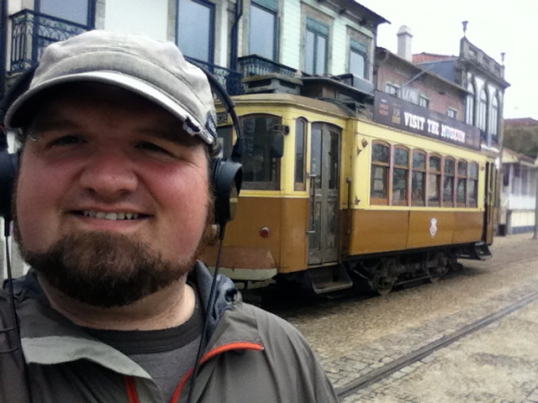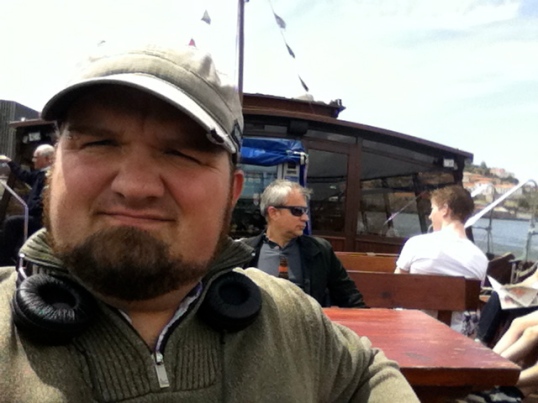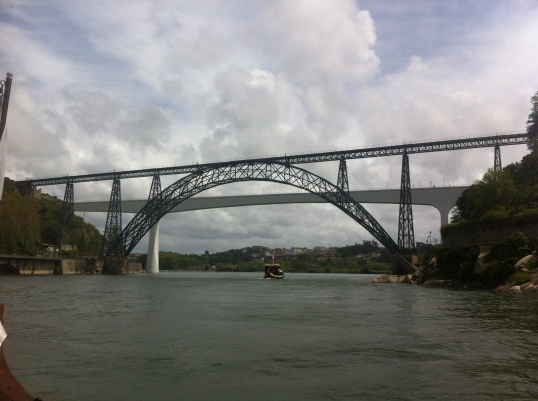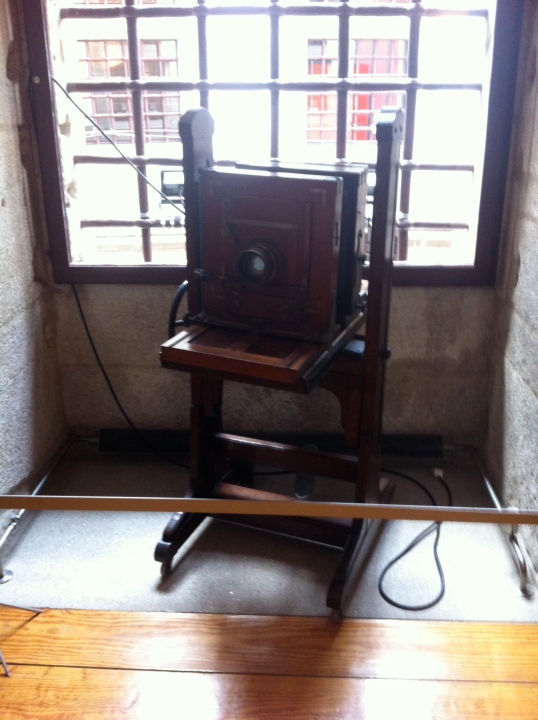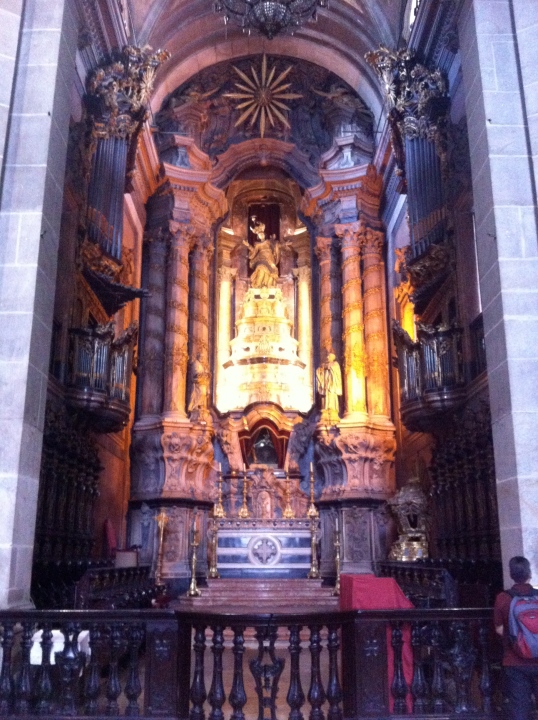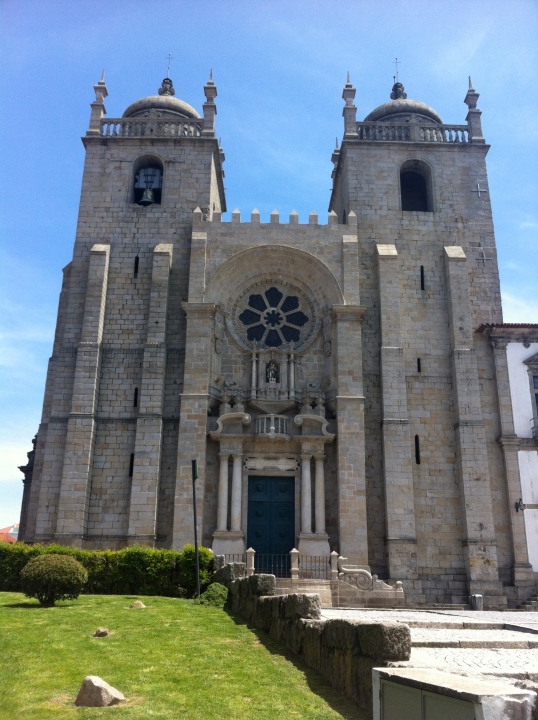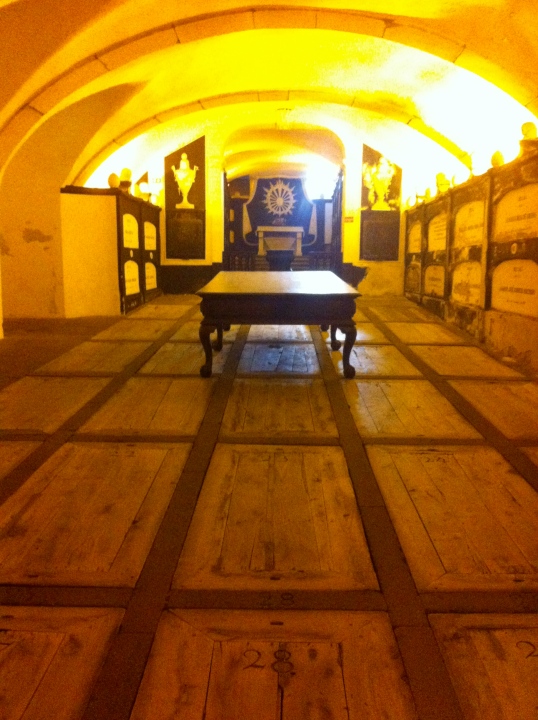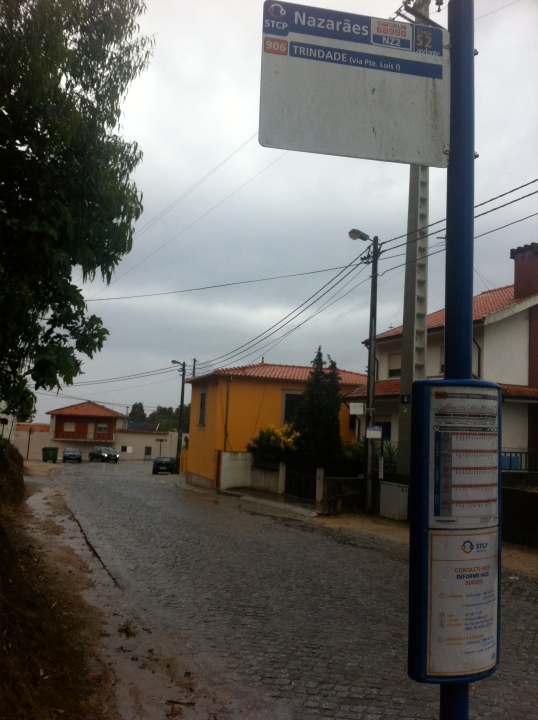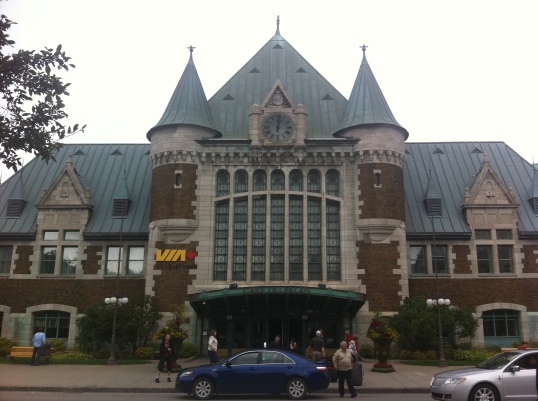Porto – The Highlights
There is lots to love about Porto. The Port wine, the Francesinhas, the steep cobbled streets – it wasn’t hard to find cool things to do in the three weeks I was there. I actually found that, for the most part, I stayed away from the more obvious things to, which was refreshing. A lot of the more heavily promoted places I avoided, and just went where the wind took me. It was nice. Here are a few of the highlights.
Matosinhos / Foz de Douro
I went to the Atlantic coast of Porto twice while I was there (three times if you count the bus tour, and not counting all the time on the beach at madalena), and each gave me an interesting perspective on the place. The first was on the day I took the above photo (and the panorama shot from the previous post) which was particularly blustery and a bit rainy.
The Foz is now an upscale, lively part of Porto, and has its roots as a fishing village, as do most of the now-suburbs of the city. Just north of the Foz is Matosinhos, which is a separate city from Porto but there is practically no visible difference between the two. Both Matosinhos and Foz are great to visit, mainly because of the beaches that stretch the length of the two places along the Atlantic.
On my last day in Porto, I took the opportiunity to take the Metro out the Matosinhos and to walk all the way south to the mouth of the Douro – around 5km. As you can see, it was a great day for it.
The beaches are stunning – I really regret not bringing my bathing suit – and the eye candy ain’t so bad either. It was a beautiful day (a bit too beautiful – sunburn # god knows what), and it’s a great walk. Along the way, you see the Cheese Castle – Castelo do Queijo, a medieval castle that sits on a rock that apparently looks like cheese, hence the name.
There is also the statue of Dom Joao I, and further along, the Sea Life Center.
After this you’re into Foz de Douro, and the shops along the oceanside road – which changes its name a few times along the way – get more expensive the further south you go. I stopped along the way at a cafe and had my last francesinha and beer, and kept going.
If you like beaches, shopping, and walking, then this area is for you.
Tours
I did a few touristy tours while in Porto.
The Yellow Bus Tour package was pretty good – they have three different lines, and they’re pretty comprehensive. The great thing is that you can buy your ticket for three days, and you get full access to the Bus and Metro system.
I also did the Tram tours of the city, which use the historical tram cars to go around the city. Again, it’s a great network and cool way to see the city, and for 8E, you get a 24hour ticket that also gets you into the Tram Museum, which has some nice old examples of streetcars from the past.
Finally, I did a boat tour of the Douro with Douro Azul, which was part of the Yellow Bus Tour paackage. Porto is the City of Six Bridges, of which they are really proud (Lisbon only has two…), and seing them from the boat is a great way to do it. Even if you just paid out of pocket, most tours are 45 minutes and 10E, so it’s not excessive. The cool thing about Porto’s Bridges is that they are each very different, and each has its own character. The most famous bridge is one designed by Eiffel himself, and although it is thought that the Dom Luis I bridge is done by Eiffel, it is not.
I did try to do my usual walking tour of the city, but it seemed impossible to make the booking. I tried 3 times. I guess it wasn’t meant to be.
Museums, Galleries and Attractions
Centro Portugues de Fotografia
I didn’t know anything about this place, and stumbled on it by accident, but this Photography Museum was one of the highlights of the whole trip.
So yes, it’s in an old jail, which is kinda awesome. On the main floor is where the exhibition space is, and there were some interesting exhibitions on when i visited. The upper floors are dedicated to the museum space, which was very cool – they have cameras of all shapes and sizes, and even though I didn’t understand any of the descriptions (everything is in Portuguese) it was still cool to follow the history of photography.
The Douro, on the Gaia side, is lined with the cellars of the Port producers from up the river. It has become a major center for tourism, as every producer has some sort of Cellar tour and Port wine tasting, and the prices range from (I’m told) free to 10E. My tour came as part of the package with the bus tour, but I believe it would have only cost 10E. The tour itself is your run-of-the-mill winery tour, without the vinyards – for those, you have to go up the Douro. But it’s not the tour, but the tasting, that you go for. On my tour, I got to taste one White and one Red port, both of which were yummy, but I saw that you could arrange for a more elaborate tasting, with different ports and cheeses to go along with. I think if I’d been with someone, I might have done more of these, if for nothing else than the snakc and the mid-afternoon buzz.
I think streetcars are neat, and in Porto, there’s a whole museum, owned and run by the city’s transportation authority, celebrating these wonderful machines.
The Museum is inside the old tram workshop, and they have examples of trams fromt he first horse-drawn carriages to the last example of trams made in Porto. The ticket for entry is part of the Tram tours ticket. It’s a short visit, but still kinda fun.
Torre de Clerigos / Igreja Clerigos
At the top of the Rua de Clerigos, which is the southern border of the Praca Liberdade, stands the Igreja de Clerigos, a Baroque church. Behind that, but towering over the city, is the Torre de Clerigos, one of the most iconic buildings in the city.
The view from the tower is, of course, fantastic. You get views of the entire surrounding city, and on a clear day, you can easily see out to the ocean.
What I found far more impressive was the church. I’ve never been exposed to Baroque architecture or decor that much – what “classica architecture” there is in Canada seems to tend to either be neo-Roman or neo-Gothic – so seeing a Baroque church on the outside is somewhat of a rarity.
Seeing the inside was breathtaking.
Firstly, it’s round on the inside. Well, more oval, but you get the point. I’ve never seen that in a church, well, ever. Also, the decor of the barque church is far more over-the-top than I’ve ever seen. Crazy-beautiful sculptures, gold-covered everything, a sanctuary to beat the band… it was a lot to take in. And sadly (or happily, I guess) very few people came into the church, all heading up to the tower. there were, as you can see, a few people in the church, but It was nice not having a huge pile of people around you, like everywhere else.
Being a very Catholic country, Porto has other major churches.
Santo Antonio
The Se
Sao Francisco
Sao Francisco is the big attraction as far as churches go, and yes, it was beautiful – a former Franciscan church, now deconsecrated. But what I found more interesting was next door, in what is now the museum. When you go downstairs, you see…
There are rooms and rooms of graves under the church. It was cool. And creepy.
Igreja de Carmelitas / Igreja de Carmos
Further down from the Clerigos is Rua de Carmo, and there you will find these twin churches.
Why there are two practically identical churches side-by-side, I don’t know – I didn’t get the story. What I find interestingis that, you will notice, a very narrow building separates the two churches. There is (or was) a law stating that churches couldn’t share walls, so that bulding in the middle is apparently a house, and it is, apparently, occupied. Cool.
I did, of course, also visit the National Museum Soares dos Reis, which is dedicated to Reis, a famous sculptor, and was quite nice. My favourite thing there was this:
I also went to Serralves, probably the most famous Museum / Gallery in Porto. The gallery was cool, but I found the grounds far more interesting.
I’m not going to bore you with descriptions of either, though, because there’s nothing I can add to what I’ve already read, and that’s a lot. Sufficed to say, they’re both worth visiting, and I enjoyed them tremendously.
Final Thoughts
Porto was, for me, a lot like Rouen – I loved the city itself, but at the end of the day, met very few people. I would, however, come back to Porto in a second – I feel like, while I got to know the city a little bit, I didn’t really get to enjoy the outlying area, which seems to be to be just as promising as the city.
Photo Album
As always, click here to see my Picasa Web Album from Porto







